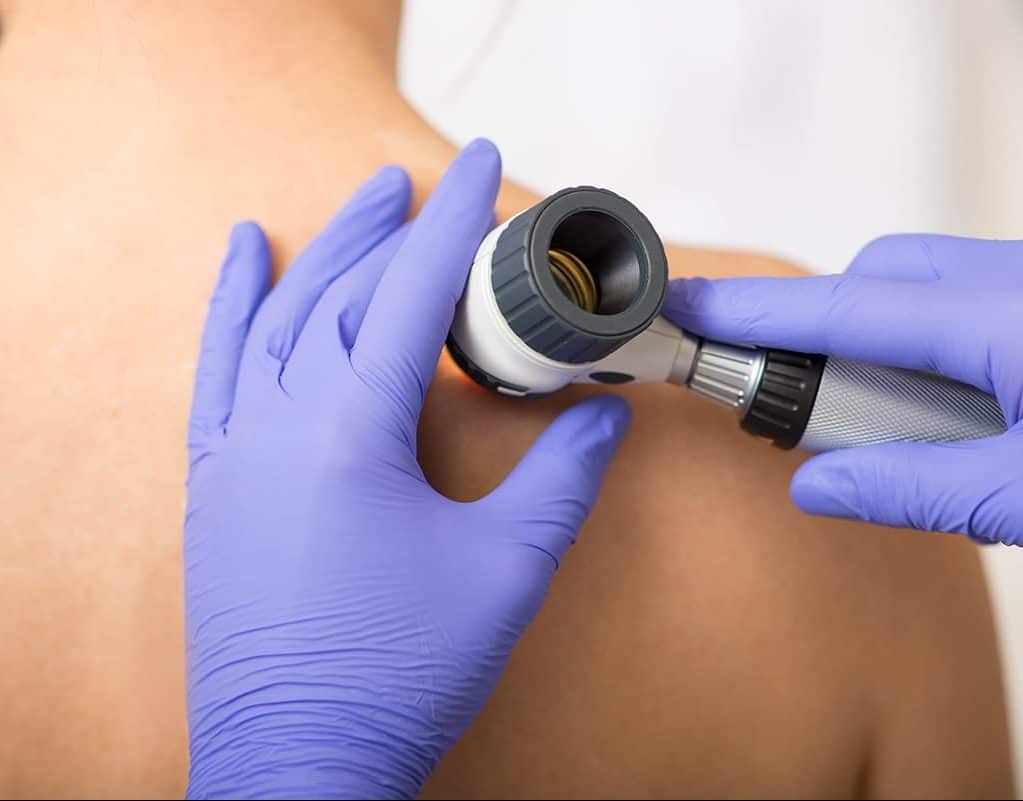Undergoing a full-body examination can seem daunting, and it is something that far too many people put off. People often avoid scheduling a full-body examination due to faulty thinking, such as:
- I can check my skin myself
- I am not at risk for skin cancer
- Skin cancer is not that dangerous
All three of those reasons are incorrect. Only an experienced dermatologist can perform a full-body examination and know what signs need further investigation. Anyone can get skin cancer, and your doctor or dermatologist should determine how frequently you should have full-body exams. Skin cancer is by far the most common type of cancer, and while most types are easily treated if caught early, certain types of skin cancer can be deadly.
A full-body examination is painless and only takes 10-20 minutes. Those few minutes can ensure that any cancerous or pre-cancerous lesions are spotted as early as possible, reducing your risk of complications.
You will be taken to a clean and comfortable exam room where a medical assistant will ask a few questions about your health history and if you have noticed any unusual areas of skin. You will then be left alone to remove all your clothing. Depending on the office, you will be given and gown or a drape to cover yourself.
Your dermatologist will then come into the room and may ask you further questions about your dermatology history. Feel free to ask any questions you may have. With gloves on, the dermatologist will exam every inch of your skin, starting at your scalp and proceeding to your toes.
The exam is an excellent time to ask any questions you have about your skin, and your dermatologist can advise you about signs to look for. The dermatologist will make notes about the shape and location of any moles to compare to future exams. The size, borders, shape and color of moles will be noted so that if there is ever a change, it can be evaluated.
If the dermatologist discovers any area of concern, a biopsy can often be performed during the exam. Doing a biopsy at the time of the exam saves you the trouble of having to make a follow-up appointment for a biopsy. The abnormal area will be numbed with a topical cream or a small injection, and a small piece of the lesion will be removed and sent to a pathologist for evaluation. The site will then be bandaged, although these biopsies are often so small that they only require a band-aid.
You will be left alone to get dressed and, assuming you have no further questions, free to leave. If a biopsy is required, the office staff will inform you of when the results will be available and schedule a follow-up appointment for the results.
To make the exam as simple as possible:
- Shower the day of the exam
- Avoid heavy make-up or body powder as they can obscure places that need to be examined
- Wear comfortable clothing that is easy to put on and take off
- Remove fingernail and toenail polish before the exam
The first full-body exam is also a good time for your dermatologist to teach you how to do self-exams and what type of changes require you to schedule an appointment. They will also discuss how frequently you should schedule a full-body exam.
Your skin is the largest organ on your body, and it deserves the same care you give to the rest of your body. A full-body exam is an easy and painless way to make sure that your skin is healthy and remains so.

